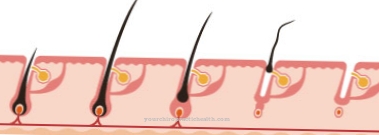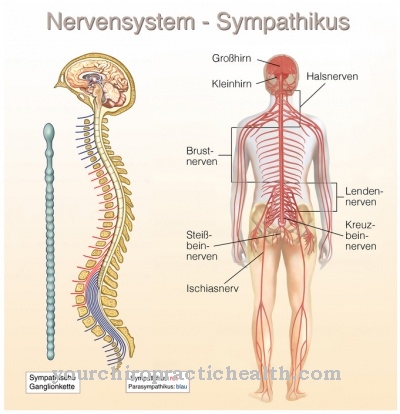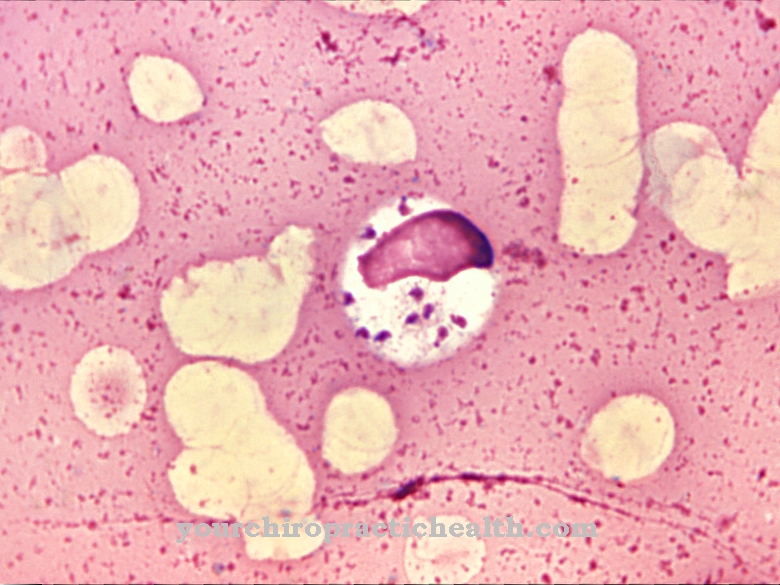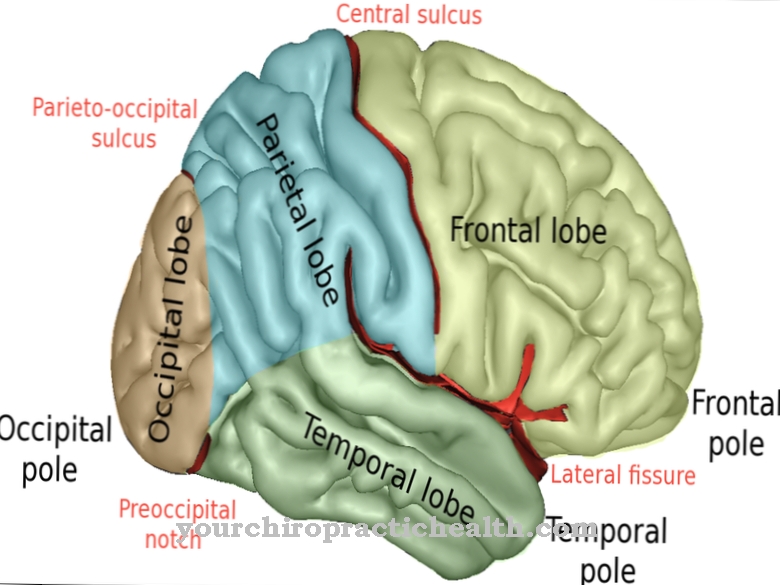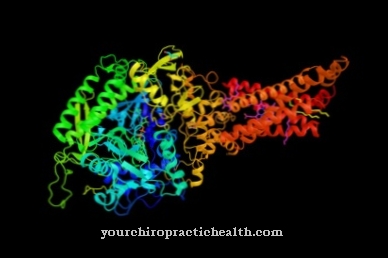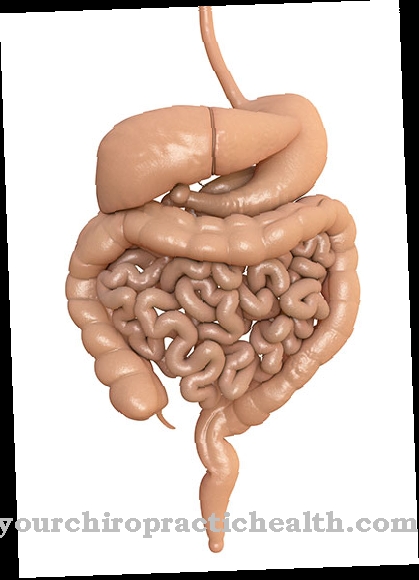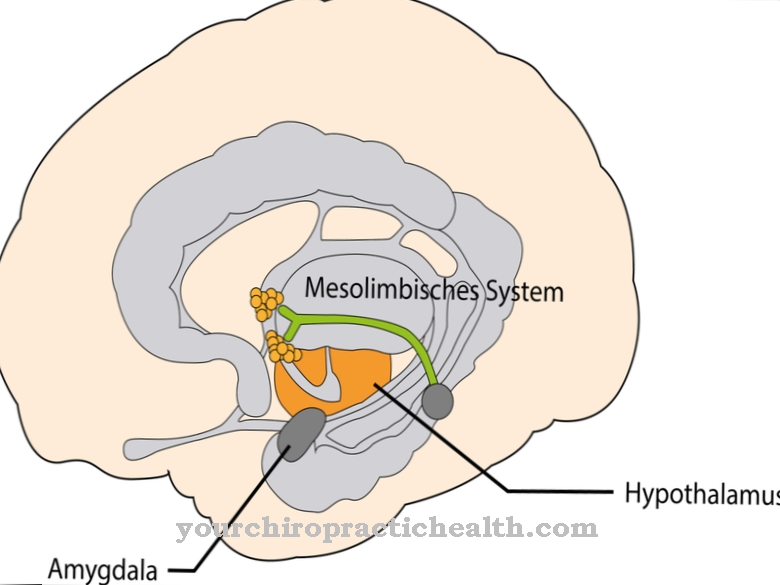At the Leigh syndrome it is a hereditary disease. It is one of the mitochondrial diseases.
What is Leigh Syndrome?

© Kazakova Maryia - stock.adobe.com
As Leigh syndrome is a hereditary disease in which there is a disruption of the mitochondrial energy metabolism. The disease also bears the names Leigh's disease, Leigh's disease and Subacute necrotizing encephalomyelopathy.
The name Leigh Syndrome goes back to the British psychiatrist and neuropathologist Archibald Denis Leigh. He mentioned the disease for the first time in 1951. He described a six-year-old boy who was suffering from developmental disorders that progressed rapidly. So the boy died within six months. In his brain there was evidence of an increase in capillaries and extensive necrosis. Leigh's disease usually begins in infants or toddlers. On the other hand, adult forms are very rare.
causes
Leigh's disease is caused by a disorder of the mitochondrial metabolism. This concerns the region for generating and providing energy. Different defects in the respiratory chain area complex I to IV are possible. The respiratory chain gains ATP (adenosine triphosate) as a supplier of energy through glycolysis. Furthermore, there may be defects in the citric acid cycle.
Deletions within the mtDNA are often responsible for the disorders. Sometimes complex II, biotinidase or mitochondrial ATPase are affected by point mutations. The changes within the mitochondrial genome occur through inheritance on the maternal side. When fertilizing the female egg, the male sperm do not introduce their mtDNA into the zygote. Genes which are encoded in the nDNA are in most cases autosomal recessive.
The incidence of mitochondrial disease is between 1 and 1.5 in 10,000. Leigh syndrome is one of the rare mitochondrial diseases. The hereditary disease is more common in boys than in girls. This fact can be attributed to mutations that are linked to the X chromosome. They occur more frequently in some families. If a family member already has Leigh's syndrome, the frequency of the disease is 33 percent more extensive than if inheritance occurs in an autosomal recessive manner. There the frequency is 25 percent.
Symptoms, ailments & signs
Around 70 to 80 percent of all sufferers are affected by the classic form of Leigh syndrome. The disease begins with them in babies or toddlers, while their development proceeds normally beforehand. The first symptoms appear in a period from the 3rd month to the 2nd year of life and can appear insidious, subacute or acute. In around 75 percent, the symptoms are insidious.
The symptoms that appear depend on which region of the brain is affected by the disease. This can lead to muscle weakness, muscle paresis, epileptic seizures, difficulty swallowing, vomiting, hypotension and delayed development. Furthermore, there are eye symptoms such as paralysis of the eye muscles, nystagmus and breathing disorders. Around 37 percent of all affected children also have an intellectual disability.
Due to the epileptic seizures, there is a risk of critical situations. About 55 percent of all children also suffer from poor appetite and nutritional problems. Another typical characteristic of the hereditary disease is the lack of physical growth. Cardiac disorders such as cardiac insufficiency, deafness, kidney changes, hormonal disorders and sensitivity disorders are also possible. It is not uncommon for there to be serious complications that lead to the death of the child.
Diagnosis & course of disease
Leigh syndrome can be diagnosed by its symptoms and a medical history of the child's family. It is not uncommon for Leigh's disease to have psychomotor developmental disorders. Other diagnostic options include determining the neurological status by testing pathological reflexes, magnetic resonance imaging (MRT) and a lumbar puncture, during which the cerebral fluid (liquor) is examined.
A muscle biopsy can be performed to detect ragged red fibers. As a rule, Leigh syndrome takes an unfavorable course of the disease. The affected children usually die after a few years, which is mostly due to respiratory regulation disorders. The prognosis is more favorable if the disease is juvenile or adult.
Medicine hopes to be able to stop the dangerous mitochondrial disease in the future through the use of sirolimus, which would have a positive effect on survival time.
Complications
Leigh syndrome leads to various complaints that significantly reduce and limit the quality of life of those affected. As a rule, patients are dependent on the help of other people in their everyday life due to the syndrome. Especially in children there is a strong delay in development. The patients suffer from pronounced muscle weakness and epileptic seizures.
These can also be associated with pain. Furthermore, swallowing difficulties occur, so that those affected can no longer take food and fluids in the usual way. The quality of life is thereby considerably restricted. Likewise, there is a loss of appetite and furthermore cardiac insufficiency, so that in the worst case the patient can die of cardiac death.
A causal treatment of Leigh syndrome is unfortunately not possible. As a rule, those affected are dependent on therapies for their entire lives that can make everyday life more bearable. Parents, too, are often dependent on psychological treatment, as they often suffer from depression and other psychological complaints. Leigh syndrome may also reduce the life expectancy of those affected.
When should you go to the doctor?
Since Leigh syndrome is a hereditary disease and does not heal itself, a doctor should always be consulted. If left untreated, Leigh syndrome can lead to death. A doctor should be seen if the person with Leigh syndrome has muscle weakness or general weakness. Epileptic seizures or difficulty swallowing can also indicate the syndrome.
Respiratory disorders or intellectual disabilities may also be indications. If these symptoms occur in childhood, a doctor should always be consulted. Heart problems or deafness also indicate Leigh syndrome. These can develop into serious complications that can lead to the death of the patient.
An initial examination for Leigh syndrome can be done by a general practitioner or a pediatrician. Further treatment depends on the exact symptoms and their severity.
Therapy & Treatment
A causal treatment of Leigh syndrome has not yet been achieved. There are different therapeutic approaches to which u. a. the administration of antioxidants or electron transporters, the stimulation of the remaining enzyme activity with cofactors such as vitamin B1 (thiamine), the replenishment of the energy storage pool, a ketogenic diet, the reduction of toxic metabolites or supplementation in the case of secondary deficiency.
The way in which the mitochondrial disorder of the metabolism is treated ultimately depends on the respective diagnosis, which varies from person to person. This usually requires complex molecular genetic and biochemical analyzes. The most promising options should therefore be carefully examined. If there is a pyruvate dehydrogenase defect, a ketogenic diet that has a high fat content with only a few carbohydrates is considered to be promising. Acidosis can be influenced by the use of sodium carbonate.
Special drugs are administered to treat seizures. However, some drugs such as valproate or tetracyclines are unfavorable and should therefore be avoided. Further therapeutic measures such as occupational therapy, physiotherapy or speech therapy are available to alleviate the symptoms. In addition, medicine is researching further sensible treatment measures.
Outlook & forecast
Leigh syndrome has a relatively poor prognosis. The life expectancy of the affected children is only a few years. With modern therapy methods the symptoms can be alleviated, but not the course of the disease can be slowed down. The exact prognosis depends on the severity of Leigh's disease. The general condition of the patient is also an important factor.
The physician will include all relevant information in his diagnosis and prognosis. Depending on whether and which complications occur, the prognosis may improve or worsen as the disease progresses. As a rule, the doctor responsible will not give a final prognosis, but only give a broad period.
Leigh syndrome is a fatal disease that is associated with considerable discomfort for patients. This also affects the parents, who sometimes suffer severely from the child's disease. After the child dies, parents should begin therapy to help them come to terms with the grief. There is no good life expectancy for those affected.The relatives can get over the illness of the child under professional guidance and in many cases the mothers can even get pregnant again.
prevention
Leigh's disease is a congenital hereditary disease. Because of this, there are no meaningful preventive measures against the syndrome.
Aftercare
With Leigh syndrome, there are usually no special follow-up measures available to those affected, as this disease is a hereditary disease that cannot be completely cured. However, the person affected should consult a doctor as soon as the first signs and symptoms of the disease appear, so that no further complications or complaints can occur, as this disease cannot heal itself.
If you want to have children, genetic testing and counseling can provide information about the likelihood of Leigh's syndrome in your descendants. In most cases, the symptoms of Leigh syndrome can be relieved relatively well by taking medications and various supplements. The person affected should always take the medication regularly and ensure the correct dosage.
If anything is unclear, a doctor should be consulted first. A healthy lifestyle with a healthy and varied diet also has a positive effect on the course of the disease. Most of those affected are still dependent on the measures of physiotherapy, although many of the exercises can be performed in your own home. Usually the syndrome does not reduce the life expectancy of those affected.
You can do that yourself
In the absence of specific treatment that could help cure the neurological condition, those affected still have some options for self-help. These can help to moderate the impairments in your everyday life caused by the severe physical and mental limitations.
As some therapies have shown in individual cases, a change in diet to particularly low-carbohydrate food can reduce the concentration of lactic acid and the associated drop in the pH value in the blood. Against this background, mainly vegetables and dairy products should be on the daily menu in order to alleviate the symptoms and slightly improve the general state of health. Vitamin B1 (thiamine) and B2 (riboflavin) are also recommended. Highly sugary foods are to be avoided.
For those affected, occupational therapy measures promise to alleviate their symptoms. The aim of treatment is to maintain maximum independence in everyday life. Since those affected generally have not only physical limitations but also communication deficits, a visit to a speech therapist can prove to be a valuable aid in everyday life. Here, possible articulation deficits and language disorders are mitigated through targeted training and compensated as best as possible. This enables those suffering from Leigh Syndrome to develop and secure social participation to a greater extent in everyday life. The use of physiotherapeutic offers helps individuals to improve their general mobility and functionality.



.jpg)
